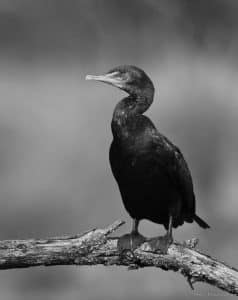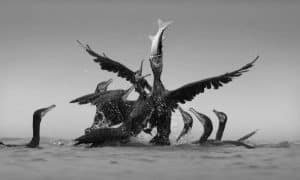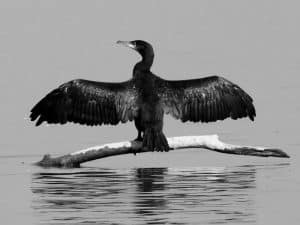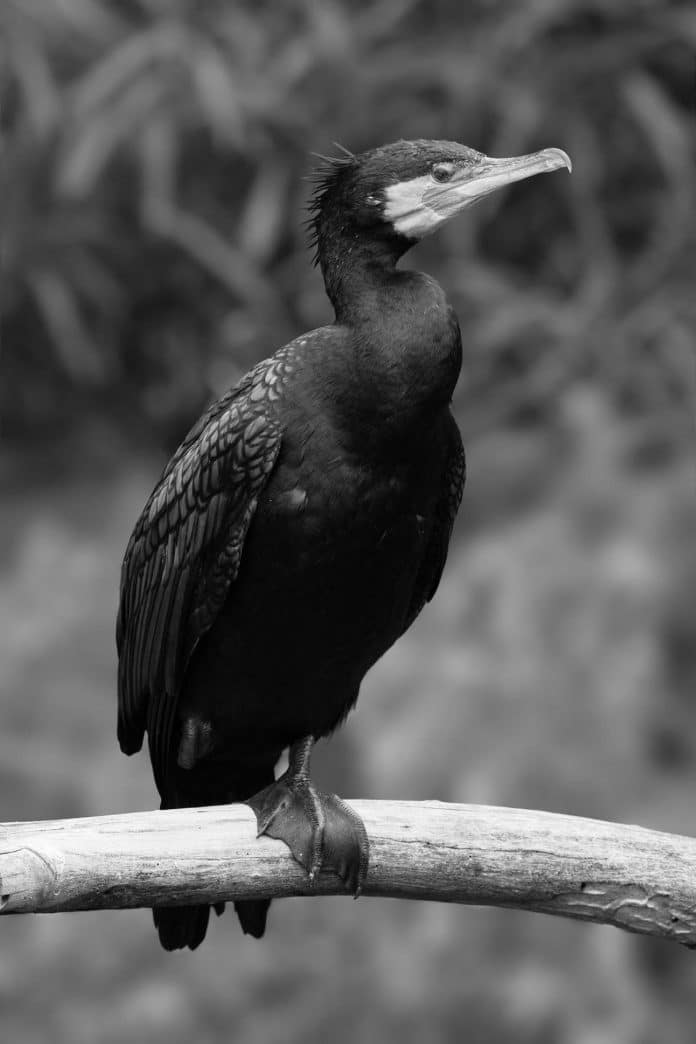Introduction to Cormorants
As a wildlife enthusiast, you are likely familiar with the beauty and diversity of Tanzania’s bird species. Among these, the cormorants stand out as fascinating and enigmatic creatures. Cormorants in Tanzania are aquatic birds that are part of the Phalacrocoracidae family, and they can be found in various regions across the globe, including the stunning landscapes of Tanzania. These birds are known for their remarkable diving abilities and sleek, dark plumage, making them a captivating sight for birdwatchers and nature lovers alike.
In Tanzania, cormorants can be found in a variety of habitats, ranging from coastal areas to inland lakes and rivers. Their adaptability to different environments allows them to thrive in both fresh and saltwater habitats, making them a common sight for those exploring the diverse ecosystems of Tanzania. Whether you are a seasoned birder or a novice wildlife enthusiast, observing cormorants in their natural habitat is an experience that promises to leave a lasting impression.
Cormorants are known for their distinctive appearance, characterized by their long necks, hooked bills, and webbed feet. Their streamlined bodies and impressive wingspans make them excellent divers and swimmers, enabling them to forage for food beneath the water’s surface. When observing cormorants in Tanzania, you will be struck by their grace and agility as they navigate the country’s waterways and coastlines in search of sustenance.
Cormorants habitat in Tanzania
Tanzania boasts a rich tapestry of habitats that provide ideal conditions for cormorants to thrive. From the expansive shores of Lake Victoria to the picturesque waterways of the Selous Game Reserve, these birds can be found in a range of environments that cater to their diverse needs. Cormorants are often spotted perched on rocky outcrops or gliding gracefully over the water, showcasing their mastery of both land and sea.
One of the most iconic locations to observe cormorants in Tanzania is the Rufiji River in the Selous Game Reserve. This majestic waterway is home to a wealth of birdlife, including cormorants, and offers visitors the opportunity to witness these birds in their natural element. The tranquil beauty of the Rufiji River provides a serene backdrop for observing cormorants as they go about their daily routines, offering a glimpse into their captivating way of life.
In addition to the Selous Game Reserve, cormorants can also be found along the shores of Lake Tanganyika, where their presence adds to the allure of this breathtaking freshwater ecosystem. The crystal-clear waters of the lake provide an ideal hunting ground for cormorants, allowing them to showcase their remarkable fishing skills while offering visitors the chance to witness these birds in action. Whether you venture to the serene waters of Lake Tanganyika or explore the lush wetlands of the Rufiji River, Tanzania’s diverse habitats provide an ideal setting for observing cormorants in their natural surroundings.
Breeding and nesting habits of Cormorants in Tanzania
Cormorants in Tanzania exhibit fascinating breeding and nesting behaviors that offer a captivating glimpse into their family dynamics and social structures. During the breeding season, these birds congregate in large colonies, where they engage in courtship displays and establish nesting sites in close proximity to one another. Cormorants are known for their communal nesting habits, with colonies often comprising hundreds or even thousands of individuals, creating a spectacle of sights and sounds that is truly awe-inspiring.
The nesting sites of cormorants in Tanzania are typically located in secluded areas, such as rocky cliffs, islands, or dense vegetation along the water’s edge. The birds construct their nests from twigs, reeds, and other natural materials, creating sturdy platforms that provide a safe and secure environment for their eggs and young. As the breeding season progresses, these colonies become a hive of activity, with adult cormorants tirelessly tending to their nests and offspring, creating a mesmerizing display of parental dedication and care.
Once the eggs hatch, the colonies buzz with the energy of hungry chicks eagerly awaiting the return of their parents with nourishment. Cormorant chicks are born naked and helpless, relying entirely on their parents for sustenance and protection. The sight of adult cormorants diving into the water and emerging with fish held firmly in their bills is a testament to the remarkable parenting skills of these birds, as they work tirelessly to ensure the survival of their young. Observing cormorants during the breeding season offers a profound insight into the intricate web of life that unfolds within these bustling colonies, providing a poignant reminder of the enduring power of nature.
Feeding behavior and diet of Cormorants in Tanzania

Cormorants are renowned for their exceptional diving abilities, which they employ with great skill to capture their prey beneath the water’s surface. These birds are well adapted to a piscivorous diet, primarily feeding on fish that they hunt by diving underwater and pursuing their quarry with remarkable agility and precision. Their streamlined bodies and powerful webbed feet enable them to propel themselves through the water with ease, allowing them to pursue and capture their prey with remarkable efficiency.
In Tanzania, cormorants can be observed engaging in their hunting rituals in a variety of aquatic environments, from serene lakes to meandering rivers and expansive coastal waters. The sight of a cormorant diving beneath the water and emerging with a glinting fish held securely in its bill is a testament to the remarkable hunting prowess of these birds, showcasing their ability to thrive in the diverse ecosystems of Tanzania. Whether you are exploring the mangrove-lined channels of the Rufiji River or the tranquil expanses of Lake Tanganyika, the opportunity to witness cormorants in the midst of their hunting activities is an experience that promises to leave a lasting impression.
In addition to their adept fishing skills, cormorants in Tanzania also exhibit fascinating social behaviors when foraging for food. These birds are often seen hunting in groups, coordinating their movements to drive fish towards shallower waters where they can more easily capture their prey. This cooperative hunting strategy highlights the sophisticated social dynamics of cormorants and offers a captivating insight into the intricacies of their behavior. As you observe cormorants in Tanzania, you will be struck by the seamless coordination and precision with which these birds pursue their quarry, underscoring the remarkable adaptability and intelligence that defines their feeding behavior.
Threats and conservation efforts for Cormorants in Tanzania
While cormorants in Tanzania are renowned for their resilience and adaptability, they face a range of threats that pose significant challenges to their continued well-being. Habitat loss, pollution, and human disturbance are among the primary concerns affecting cormorant populations in Tanzania, placing these birds in a precarious position. The degradation of their natural habitats, coupled with the impact of human activities, presents a formidable obstacle to the conservation of cormorants and underscores the urgent need for proactive measures to safeguard their future.
Conservation efforts aimed at protecting cormorants in Tanzania are crucial for mitigating the threats that jeopardize their survival. By raising awareness about the importance of preserving the habitats that cormorants depend on, conservation organizations and wildlife enthusiasts play a vital role in advocating for the long-term well-being of these birds. Through initiatives focused on habitat restoration, pollution control, and sustainable resource management, it is possible to create a brighter future for cormorants in Tanzania and ensure that they continue to thrive in the wild for generations to come.
Additionally, monitoring and research initiatives provide valuable insights into the behavior and ecology of cormorants, enabling conservationists to develop informed strategies for their protection. By studying the movements, breeding patterns, and foraging behaviors of cormorants in Tanzania, researchers can gain a deeper understanding of the challenges these birds face and identify targeted interventions to address these concerns. Through collaborative efforts that engage local communities, government agencies, and conservation stakeholders, it is possible to forge a path towards a sustainable future for cormorants in Tanzania, where these magnificent birds can flourish in harmony with their natural surroundings.
Best places to observe Cormorants in Tanzania

Tanzania is home to a wealth of spectacular locations that offer unparalleled opportunities to observe cormorants in their natural habitat. Whether you are a dedicated birdwatcher or simply an admirer of wildlife, these diverse environments provide a captivating backdrop for encountering these remarkable birds. From the tranquil shores of Lake Victoria to the idyllic waterways of the Selous Game Reserve, there are countless destinations in Tanzania where cormorants can be observed in all their glory.
One of the premier locations for observing cormorants in Tanzania is the Rufiji River, which meanders through the pristine landscapes of the Selous Game Reserve. This expansive river is teeming with birdlife, and cormorants can often be seen perched on overhanging branches or gliding gracefully over the water’s surface. The serene beauty of the Rufiji River provides an enchanting setting for observing cormorants as they go about their daily routines, offering a remarkable opportunity to witness these birds in their natural element.
In addition to the Rufiji River, Lake Tanganyika is another exceptional destination for encountering cormorants in Tanzania. The crystal-clear waters of this vast lake provide an ideal habitat for cormorants, who can be observed diving for fish and basking in the sun along the rocky shoreline. Whether you embark on a boat excursion or simply stroll along the lake’s edge, the chance to observe cormorants in the midst of their natural behaviors is an experience that promises to leave a lasting impression, showcasing the breathtaking beauty and diversity of Tanzania’s avian inhabitants.
Photography tips for capturing Cormorants in Tanzania
Capturing the essence of cormorants in Tanzania through photography is a rewarding endeavor that allows you to immortalize the beauty and grace of these remarkable birds. Whether you are an experienced wildlife photographer or a novice enthusiast, there are several key considerations that can enhance your ability to capture stunning images of cormorants in their natural habitat. By employing these tips and techniques, you can create evocative and compelling photographs that showcase the captivating allure of cormorants in Tanzania.
First and foremost, it is essential to familiarize yourself with the behavior and movements of cormorants in order to anticipate and capture their most captivating moments. Whether it’s the poised elegance of a cormorant perched on a rocky outcrop or the dynamic energy of a bird in mid-flight, understanding their habits and patterns is crucial for capturing compelling images. Spend time observing cormorants in their natural environment, paying close attention to their movements and interactions, and use this insight to inform your photographic approach.
Lighting plays a pivotal role in creating striking photographs of cormorants, particularly when capturing their sleek, dark plumage and distinctive features. Consider the time of day and the angle of the sun to optimize the lighting conditions for your images, aiming to showcase the iridescent sheen of the birds’ feathers and the captivating reflections that adorn their aquatic habitat. Experiment with different lighting scenarios and be prepared to adapt to changing conditions, allowing you to capture the enchanting beauty of cormorants in a variety of settings.
Ethical considerations when observing Cormorants in Tanzania

When observing cormorants in Tanzania, it is essential to approach the experience with a deep respect for these magnificent birds and their natural environment. By adhering to ethical guidelines and principles, you can ensure that your interactions with cormorants are respectful, considerate, and mindful of their well-being. Whether you are an avid birder or a casual observer, these ethical considerations are crucial for fostering a harmonious coexistence with the wildlife that calls Tanzania home.
One of the fundamental principles of ethical birdwatching is to minimize disturbance to the birds and their habitats. When observing cormorants, maintain a respectful distance that allows you to appreciate their behavior without encroaching on their space or causing undue stress. Use binoculars or a telephoto lens to bring the birds closer to you, rather than approaching them directly, and be mindful of any signs of discomfort or agitation that may indicate the need to adjust your position or distance.
In addition to minimizing disturbance, it is important to avoid any actions that may disrupt the natural behaviors of cormorants or other wildlife. Refrain from making loud noises, sudden movements, or any gestures that could startle or alarm the birds, as these actions can disrupt their activities and detract from the authenticity of your observations. By maintaining a quiet and unobtrusive presence, you can create an environment that allows cormorants to go about their daily routines undisturbed, preserving the integrity of their natural behaviors.
Conclusion
In conclusion, the secret lives of cormorants in Tanzania offer a mesmerizing insight into the captivating world of these enigmatic birds. From their remarkable diving abilities to their communal nesting habits and exceptional hunting skills, cormorants embody the untamed beauty and diversity of Tanzania’s avian inhabitants. As a wildlife enthusiast, the opportunity to observe and photograph these birds in their natural habitat is a privilege that promises to leave a lasting impression, showcasing the enduring allure of Tanzania’s rich biodiversity.
By embracing ethical considerations and supporting conservation efforts, you can play a vital role in safeguarding the future of cormorants in Tanzania and ensuring that these magnificent birds continue to thrive in the wild. Whether you venture to the serene waters of Lake Tanganyika, explore the meandering channels of the Rufiji River, or simply savor the tranquility of Tanzania’s coastal landscapes, the chance to encounter cormorants in their natural element is an experience that resonates with the untamed spirit of the African wilderness.

































